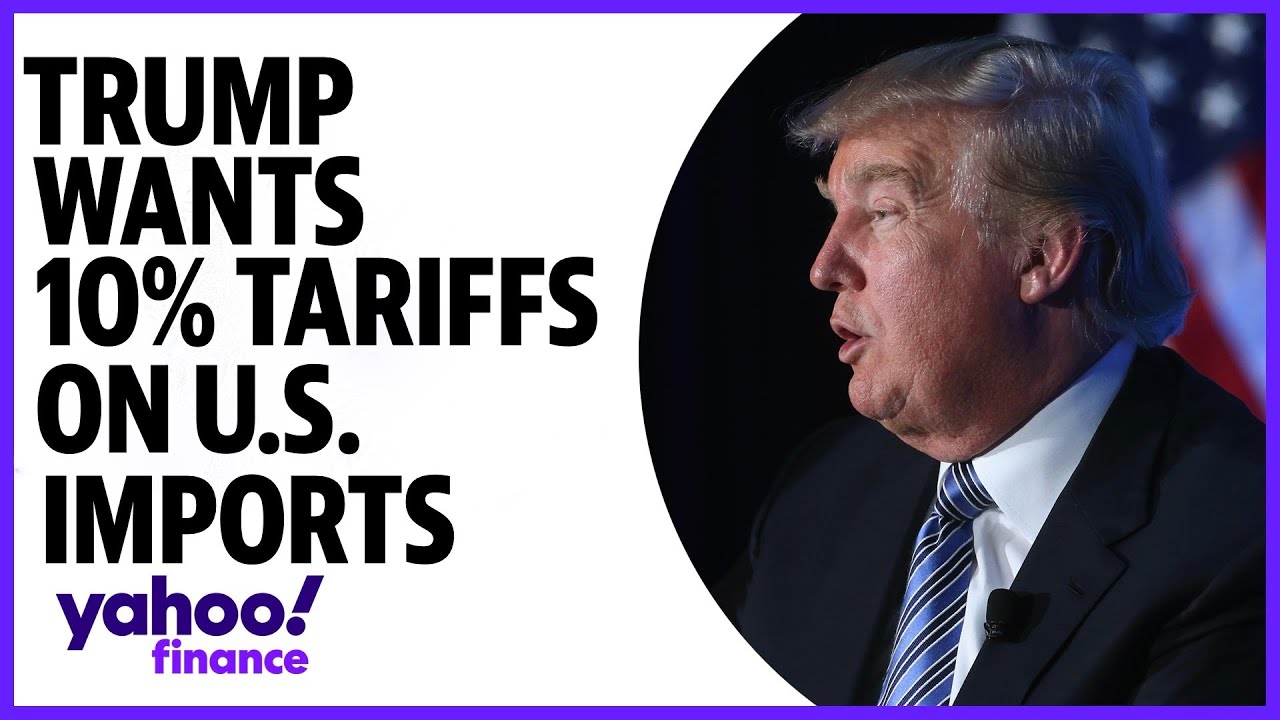Automotive Tariffs: Trump's Exclusive Strategy For Softening The Blow

Table of Contents
The Rationale Behind Trump's Automotive Tariff Strategy
Trump's imposition of automotive tariffs stemmed from a belief in protectionism – the economic theory advocating for shielding domestic industries from foreign competition. The stated goals were multifaceted: bolstering the US automotive industry, reducing the trade deficit, and creating (or preserving) American jobs. The administration argued that high import tariffs on foreign vehicles would make American-made cars more competitive, stimulating domestic production and potentially creating a more robust auto sector.
However, this protectionist approach carries inherent risks. The economic theory of protectionism, while seemingly straightforward, presents a complex reality. While increased domestic production and job creation are potential benefits, they often come at a cost.
- Increased domestic production: This is a potential positive, but heavily depends on consumer demand and the ability of domestic manufacturers to meet that demand efficiently.
- Job creation (or preservation): While some jobs might be saved or created within the US auto industry, job losses in related sectors (e.g., parts suppliers importing from affected countries) could offset these gains.
- Reduced trade deficit (in theory): The effectiveness of tariffs in reducing the trade deficit is debated among economists, with the potential for retaliatory tariffs significantly impacting this goal.
- Potential for retaliatory tariffs: Other countries may retaliate with tariffs on US goods, leading to a trade war and harming other American industries.
- Higher prices for consumers: Tariffs inevitably increase the price of imported vehicles, making cars more expensive for American consumers.
Negotiation Tactics and Trade Deals
Trump's administration employed aggressive negotiation tactics, often wielding the threat of further automotive tariffs as leverage. This "America First" approach involved bilateral trade agreements, aiming to secure concessions from other countries to reduce trade imbalances. While some deals were reached, others failed, highlighting the complexities and limitations of this approach.
- Bilateral trade agreements: These aimed to create more favorable trade relationships with specific countries, often involving negotiation and compromise.
- Threats of further tariffs: The threat of escalating tariffs often served as a significant bargaining chip in negotiations.
- Concessions from other countries: Some countries made concessions to avoid facing higher tariffs on their automotive exports to the US.
- Impact on global supply chains: Trump's automotive tariffs significantly disrupted established global supply chains, leading to uncertainty and increased costs.
The Impact on the US Automotive Industry
The actual impact of Trump's automotive tariff strategy on the US automotive industry is a subject of ongoing debate. While some argue that it protected certain segments of the industry, others point to negative consequences. A thorough analysis requires examining various data points:
- Changes in production levels: While some domestic production may have increased, this needs to be considered in the context of overall global market changes.
- Job growth/loss statistics: A nuanced evaluation of job creation and loss across the entire automotive sector is critical.
- Impact on specific automakers: The impact varied significantly depending on the automaker's reliance on imported parts and global supply chains.
- Consumer price changes: The increased cost of vehicles due to tariffs likely impacted consumer demand and purchasing power.
- Shift in global market share: The long-term effects on the US auto industry's global market share remain to be seen.
Long-Term Economic Consequences and Alternatives
The long-term economic consequences of Trump's automotive tariff strategy are still unfolding. Immediate impacts included inflation and uncertainty in the market, while delayed impacts could include a weakened international trade position and potential damage to long-term economic growth. Alternative approaches, such as government subsidies or investment incentives for domestic automakers, might have yielded similar results without the disruptive and potentially damaging effects of trade wars.
- Inflationary pressures: Increased prices due to tariffs contributed to inflation, impacting consumer spending power.
- Impact on consumer spending: Higher prices for vehicles reduced consumer spending in this sector.
- International trade relations: Trump's automotive tariff strategy damaged international trade relations with key economic partners.
- Potential for sustainable economic growth through other means: Strategic investments in innovation and infrastructure could have produced sustainable economic growth for the US automotive industry without relying on protectionist measures.
Conclusion
Trump's "exclusive strategy" of using automotive tariffs to reshape the US automotive industry produced mixed results. While it arguably offered short-term benefits for some segments of the domestic auto sector, it also disrupted global supply chains, damaged international relations, and increased consumer costs. The long-term economic consequences are still playing out and require further study. The question remains: Were the potential gains worth the considerable risks and negative externalities? What are your thoughts on the long-term implications of Trump's automotive tariff strategy? Continue the discussion in the comments below!

Featured Posts
-
 Louisville Downtown Evacuation Due To Gas Leak Investigation
Apr 30, 2025
Louisville Downtown Evacuation Due To Gas Leak Investigation
Apr 30, 2025 -
 Prosecutorial Misconduct Alleged In Cardinal Trial New Evidence Presented
Apr 30, 2025
Prosecutorial Misconduct Alleged In Cardinal Trial New Evidence Presented
Apr 30, 2025 -
 Un Interpretazione Di Feltri Sul Venerdi Santo
Apr 30, 2025
Un Interpretazione Di Feltri Sul Venerdi Santo
Apr 30, 2025 -
 Iva I Siyana Stremezh Km Po Golemi Postizheniya
Apr 30, 2025
Iva I Siyana Stremezh Km Po Golemi Postizheniya
Apr 30, 2025 -
 The Channing Tatum And Inka Williams Relationship A Year By Year Overview
Apr 30, 2025
The Channing Tatum And Inka Williams Relationship A Year By Year Overview
Apr 30, 2025
